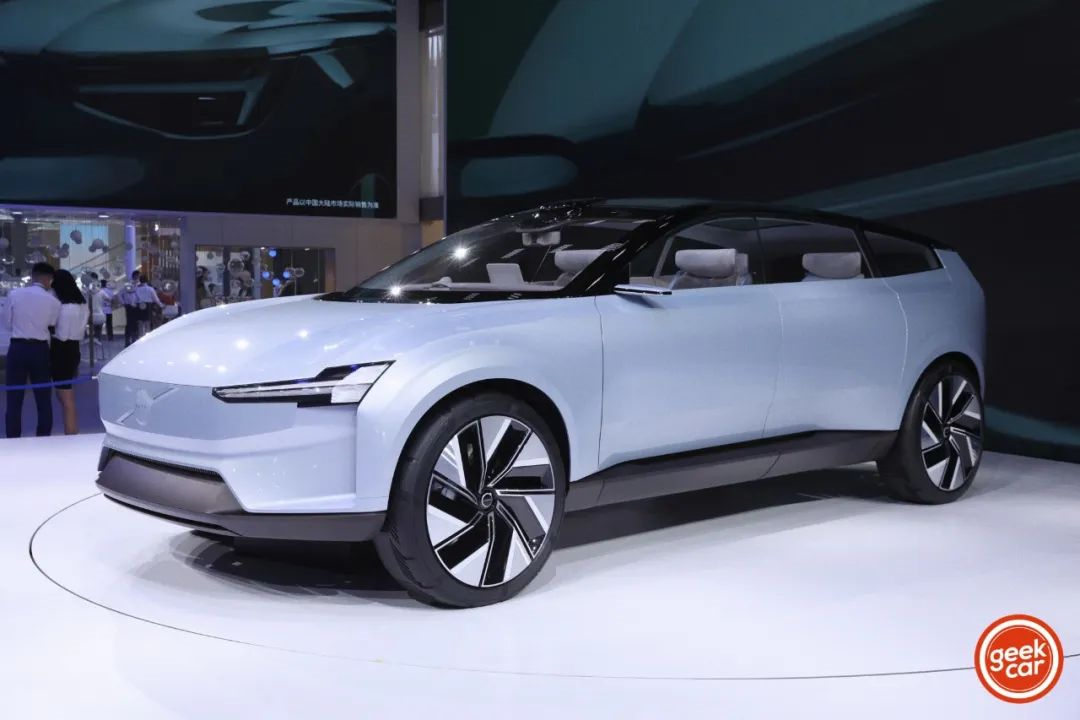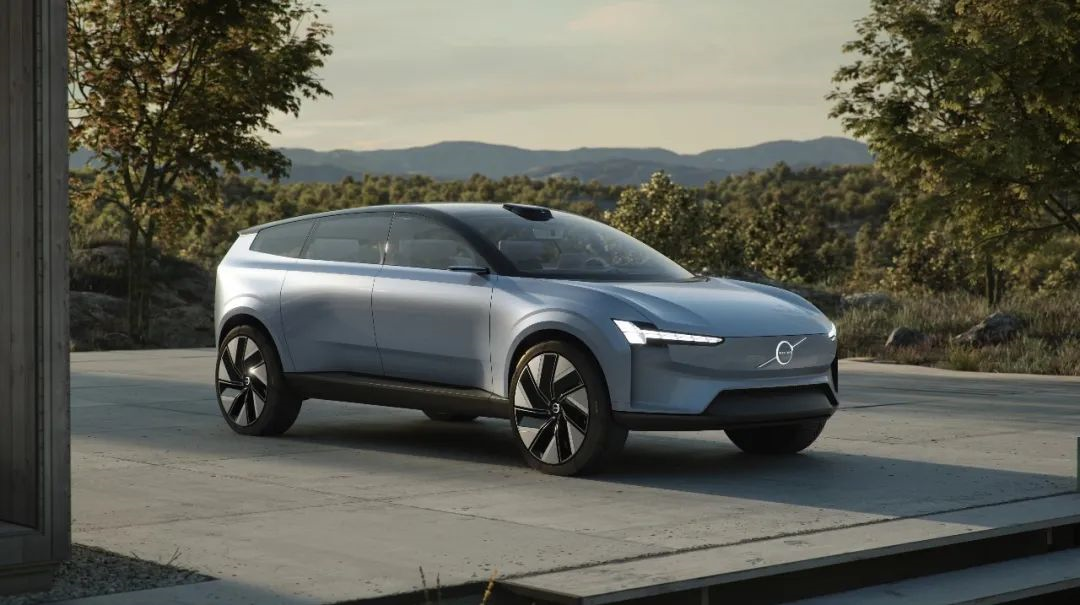Author: Michelin
Perhaps after the delay of the Beijing Auto Show, the 8-month wait was too long. Everyone couldn’t wait to show off their “trump cards”, even a lot of them. So this Chengdu Auto Show feels like an old friend reunion.
This also fits the style of the auto industry today: every time there is a new development or product, it is shown directly. It’s all about “the world martial arts are only quick and unbreakable”.
Therefore, when I see rare new faces at the auto show, I always feel surprised and excited, even curious: why is it so calm?
One of these “calm” faces is the Volvo Concept Recharge, a pure electric concept car that made its debut in China for the first time.
You can click on the video below to learn more about the car in detail in 360 degrees.
(Appearances: Sid; Editing: Yin Rui)
As a concept car, it is difficult for us to evaluate its volume production practicability. However, we can see a contradiction inherent in Volvo: it seems to be very conservative, emphasizing safety in 2022; but it also seems to be very radical, carrying various innovative attempts; it seems to come with a Nordic minimalism sense of detachment, but it hides thoughtful designs in the details; it doesn’t seem to follow trends, but it meets everyone’s needs for the future…

It’s like a catfish swimming upstream, taking different roads but eventually reaching the same destination.
When electrification breaks the old rules, what is the new moat?
“It’s a chaotic time when the old order is breaking down and the new value has not yet been established.” This sentence couldn’t be more appropriate to describe the era of electric cars today.
Car companies that used to sit comfortably in the internal combustion engine circle seem to have been thrown into the new field of intelligence and electrification overnight. In this field, people’s concepts of brands and luxury have been broken. For some people, this is a disaster, but for those who are prepared, this is an opportunity to re-establish order. Seizing the opportunity requires strength like a castle moat.During an interview, someone asked Yuan Xiaolin, the President and CEO of Volvo Asia Pacific, “What is the new era’s moat in the current transportation industry?”
“Currently in the transportation industry, I don’t think any enterprise has a so-called moat, but more differences.”
As combustion engines are effortlessly dominated by electric motors in terms of power and acceleration, it’s difficult to find a technological barrier of a carmaker in terms of power and acceleration. Perhaps this is what is called “technological parity”. However, “technological parity” does not mean a uniform appearance, nor is it a speed contest for “grabbing the first launch”, but rather catering to user needs from details.
On the back seat of the Concept Recharge, there is a small design:
“The foot pads of the seats can adjust the height separately. So when children are seated in the back, the seat can be adjusted to the most appropriate height according to their line of sight and seat belts, while also raising the foot pads to avoid the children’s feet dangling. Safety and comfort are both ensured.”
Decades ago, also in consideration of the safety of babies in cars, Volvo invented the rear-facing child safety seat. Despite changes in the power properties of cars in the past 50 years, people’s concerns about whether their own children are safe and comfortable while driving will not change. The adjustability of the seats, catering to this need, is not for showboating nor for piling up materials but rather a unique feature of this product.
Similar designs have also appeared in autonomous driving. On the protrusion above the Concept Recharge, the Luminar LiDAR with one of the highest levels of hardware precision for autonomous driving perception is implemented. To ensure the foolproofness of autonomous driving functions, Volvo uses a redundant system for emergent takeovers. These hardware components will appear as standard equipment in the next generation of pure electric vehicles.If we talk about Volvo’s actions in the field of autonomous driving, it can be traced back to 2012, when Volvo launched its autonomous driving concept car. In 2015, Volvo had a complete in-house ADAS research and development capability, and promised to take full responsibility for autonomous driving accidents in compliance with traffic regulations. However, it wasn’t until 2022 that they applied for road testing of unmanned vehicles in California, and laser radar hardware will only be standard equipment on the next generation of pure electric vehicle models.
Automatic driving exists to bring safety and convenience to users, not to use mass-produced cars as test fields. Perhaps this is why Volvo appears to be slow in terms of autonomous driving.
Safety, a seemingly ancient topic, is still the most solid demand in the era of intelligence and also the moat that still works in the new world. It just changes with new technologies.
When it comes to electrification, our first reaction is to replace the internal combustion engine with a power battery. However, electrification brings not only changes in power systems but also a series of designs based on the new system.
On the Concept Recharge, we can see the future derived from electrification. In terms of styling, in order to comply with the demanding energy consumption requirements of pure electric vehicles, a more visually soft streamlined design is adopted. The low and smooth lines of the car body are inseparable from the smooth pure electric chassis, and the larger aft space of the A-pillar can be obtained because the engine is removed.
This concept car uses a gull-wing door design. Regardless of the feasibility of future mass production of concept cars, only the smooth bottom of a pure electric vehicle, combined with gull-wing doors, can make the cabin as spacious as a real room, leaving space for intelligent application.
When the cabin becomes another living room, the sense of security needed is not only defense against danger but also comfort for the soul.Different from the current common windshield HUD design, Concept Recharge features a similar projection function on the side windows. With this feature, drivers need not worry about the safety hazards caused by obstructed views while driving, and it can also be used as an indicator for communication with the outside world, displaying the surrounding plants, trees, geographical information to the children in the rear seats. With the projection, parents need not worry about their children staring at the screen and damaging their eyesight.
Similar functions also appear on the panoramic sunroof where images projected onto the sunroof can be controlled with gestures. This allows families to play games using gestures when on a trip or when resting in the car, avoiding the problem of the projection and game functions occupying the central control screen or the windshield.
After all, intelligent technology should understand your needs rather than merely presenting fancy functions and causing trouble by occupying the driving views.
Of course, these intelligent technologies cannot exist without the intelligent “brain”.
Currently, Volvo adopts the panoramic smart cabin. Through the driver perception system, it actively identifies the driver’s emotions and needs, and through the iCup scene engine 2.0, it makes interpersonal communication more seamless. The central computing architecture of the “world tree” can also allow the functions of different domains to integrate with each other in the next generation of vehicles and improve the system’s ability through autonomous learning.
In Conclusion
A few years ago, Tesla was often referred to as a “shark” in the field of electric vehicles. The pursuit of radical technologies has disrupted traditional car companies that originally wanted to “get by” with electric vehicles.
Today, the pursuit of radical technology is no longer exclusive to Tesla, and followers are even surpassing it, fully rolling up the technological, electric and intelligent aspects at a faster pace, with faster technology adoption, smarter software and hardware, and more varied functions. The pace is so fast that they may not have considered why they need to do this, or what consumers really want.
Under this “hype,” it seems that those who understand what kind of “sword” they want to forge with technology and then put it into action may be the ones who gain consumers’ trust the most.
Perhaps this is the reverse shark of the electric age.
This article is a translation by ChatGPT of a Chinese report from 42HOW. If you have any questions about it, please email bd@42how.com.
